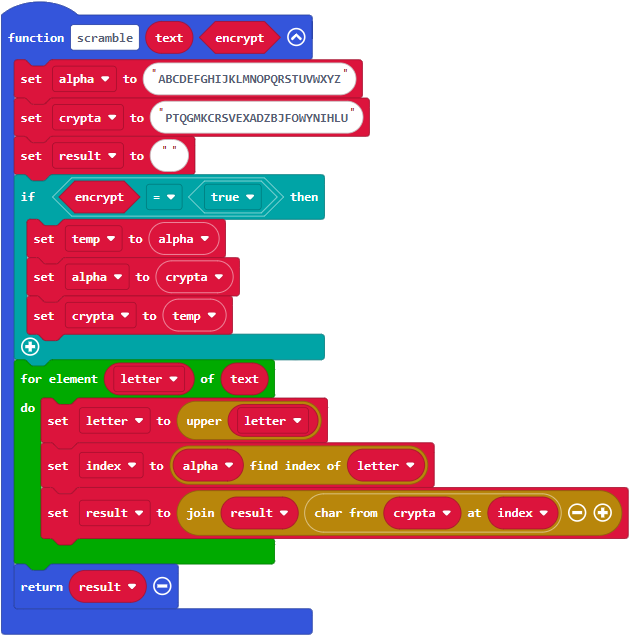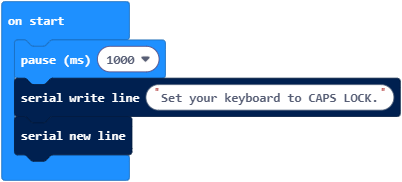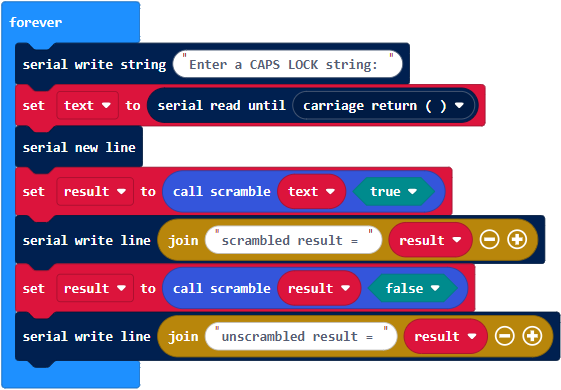Strengthen Your Cipher with Substitution
At the end of the Cybersecurity: Encryption Intro tutorial, there’s a Your Turn in the Substitution Ciphers page where you created a scrambled_alphabet_cipher project. This kind of function is a much better defense against brute-force attacks. Instead of testing 93 possible shifts, a brute force attack would have to try decrypting with 26! permutations of the alphabet. The term 26! is pronounced 26 factorial.
3! = 3 * 2 * 1 = 6 4! = 4 * 3 * 2 * 1 = 24 5! = 5 * 4 * 3 * 2 * 1 = 120 … 26! = 403,291,461,126,605,635,584,000,000
Wow! That would be a lot of rearrangements of the alphabet for a brute-force algorithm to crack. Also, who would try to look at all those combinations to find the intelligible text?
Example project: scrambled_alphabet_cipher
- Enter and flash scrambled_alphabet_cipher into a micro:bit.



- Open to the terminal, check to make sure the local echo is on, and make sure its connected to your micro:bit.
- Type HAPPY into the terminal.
- Verify that the scrambled result is RPBBL. That’s the encrypted result.
- Verify that the unscrambled, decrypted result is HAPPY.

